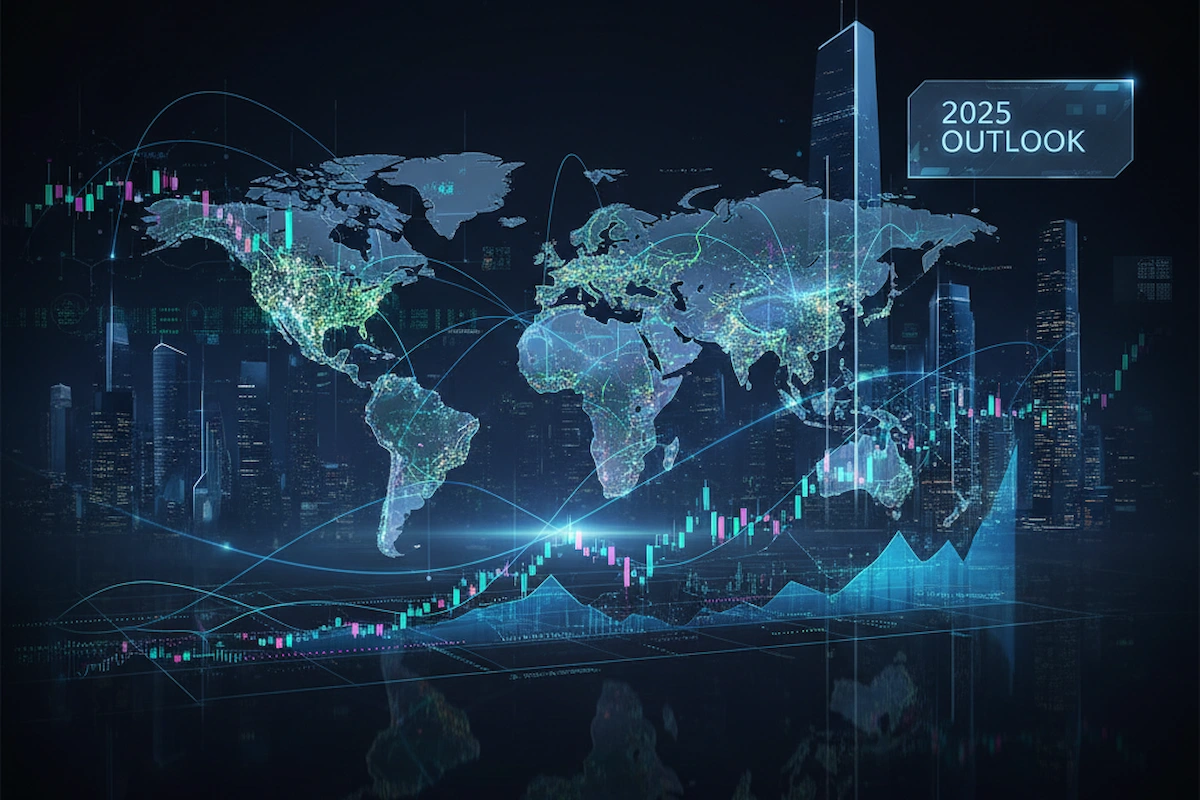GloNews10

In today’s interconnected world, understanding the global economy is crucial for businesses, investors, and policymakers alike. As we step into 2025, the global economic outlook 2025 reveals a landscape of steady yet uneven economic growth. Projections from leading institutions suggest a moderate expansion, with global GDP growth hovering around 2.9% to 3.0% for the year.
This article delves deep into the global economy’s dynamics, exploring economic growth trends, regional variations, and strategies for navigating challenges. Whether you’re tracking investments or planning international expansion, these insights on the global economic outlook 2025 will equip you with actionable knowledge.
The global economic outlook 2025 paints a picture of resilience amid headwinds. According to the International Monetary Fund (IMF), economic growth in the global economy is expected to reach 3.0% in 2025, a slight uptick from previous estimates, followed by 3.1% in 2026. This optimism stems from easing inflation pressures and stabilizing supply chains post-pandemic. However, the World Bank offers a more cautious view, forecasting a dip to 2.3% economic growth, attributing it to geopolitical tensions and trade disruptions.
For a comprehensive breakdown, consider these key forecasts:
These variations underscore the need for diversified strategies in the global economy. Investors should monitor central bank policies, as rate cuts from the Federal Reserve and ECB could boost economic growth by stimulating consumer spending.
Economic growth in the global economy is shaped by a confluence of macroeconomic and geopolitical factors. Inflation, which peaked in 2022-2023, has moderated to around 5.9% globally, paving the way for monetary easing. Technological advancements, particularly in AI and renewable energy, are accelerating productivity gains, contributing to sustainable economic growth.
One of the brightest spots in the global economic outlook 2025 is the digital revolution. AI adoption could add up to $15.7 trillion to the global economy by 2030, with early impacts felt in 2025 through enhanced efficiency in sectors like manufacturing and finance. For instance, cloud computing investments are projected to surge by 20%, driving economic growth in tech hubs like Silicon Valley and Shenzhen.

Trade tensions, especially U.S.-China relations, remain a wildcard. While tariffs have eased somewhat, the global economy’s reliance on resilient supply chains—bolstered by nearshoring—supports steady economic growth. The European Union’s Green Deal, aiming for carbon neutrality, could unlock €1 trillion in investments, fostering green economic growth across borders.
For deeper analysis, explore the IMF’s World Economic Outlook, which details how fiscal policies influence the global economic outlook 2025.
The global economy isn’t monolithic; economic growth varies significantly by region, creating both risks and opportunities.
In advanced economies, economic growth is forecasted at 1.7%, down from 1.8% in 2024. The U.S. bucks the trend with robust consumer spending, while Europe’s global economy faces energy transition costs. Japan’s aging population tempers economic growth, but yen depreciation aids exports.
Emerging and developing economies are the engine of the global economic outlook 2025, with economic growth at 4.2%. Asia leads, thanks to India’s 6.6% expansion and China’s pivot to high-tech manufacturing. However, Latin America’s commodity dependence exposes it to price volatility, potentially stalling economic growth in the global economy.
Sub-Saharan Africa’s economic growth is projected at 3.8%, driven by resource exports and infrastructure investments. The Middle East benefits from oil price stability, but diversification efforts are key to long-term global economy integration.
To understand regional debt dynamics better, refer to the World Bank’s Global Economic Prospects report, which outlines strategies for inclusive economic growth.
Despite positive signals, the global economic outlook 2025 is clouded by several challenges that could derail economic growth.
Ongoing conflicts in Ukraine and the Middle East disrupt energy markets, inflating costs and hindering global economy recovery. Trade fragmentation—where countries decouple from global value chains—could shave 0.5% off annual economic growth.
Extreme weather events, like the 2025 floods in South Asia, threaten agricultural output and supply chains. Transitioning to net-zero emissions requires $4.3 trillion annually in investments, straining public finances in the global economy. Without green financing, economic growth may falter.
Rising inequality exacerbates social unrest, while automation displaces jobs. Women and youth in emerging markets face barriers to participation, limiting inclusive economic growth in the global economic outlook 2025.
Amid challenges, the global economy offers pathways to robust economic growth. Policymakers should prioritize:
Businesses can capitalize by adopting ESG frameworks, which attract 79% of investors seeking sustainable options in the global economy.
The global economic outlook 2025 signals a year of measured economic growth in the global economy, with opportunities outweighing risks for the prepared. By addressing geopolitical frictions, embracing innovation, and committing to sustainability, stakeholders can steer toward prosperous horizons.
Stay informed—monitor updates from trusted sources to adapt your strategies. What aspect of the global economy are you most curious about? Share in the comments below for more tailored insights.